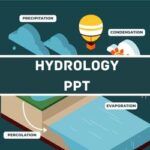Underwater windmills, also known as tidal turbines, are an innovative renewable energy technology that harnesses the kinetic energy of ocean currents and tidal flows to generate electricity. Positioned on the seabed, these turbines operate similarly to traditional windmills but use water currents instead of air. They are gaining attention as a sustainable energy source due to the consistent and predictable nature of ocean tides.
Also See: Industrial Automation PPT
Underwater Windmill PPT: Working, Advantages, Future
How Underwater Windmills Work
Underwater windmills consist of turbine blades, a rotor, and a generator. As water flows over the blades, they rotate, driving the rotor connected to a generator that converts mechanical energy into electricity. These turbines are typically installed in areas with strong and consistent tidal currents, such as coastal regions and estuaries. The generated electricity is transmitted to the shore via underwater cables for distribution.
Also See: Soil Liquefaction PPT
Advantages of Underwater Windmills
One major advantage of underwater windmills is their reliability. Unlike wind or solar power, tidal energy is predictable, as it depends on gravitational interactions between the Earth, moon, and sun. Additionally, water is denser than air, allowing underwater turbines to generate more energy even at lower speeds. They also have a minimal visual impact, as they are submerged and do not interfere with landscapes.
Challenges and Limitations
Despite their benefits, underwater windmills face challenges. High installation and maintenance costs are significant barriers, as the underwater environment is harsh and requires specialized equipment. Potential environmental impacts, such as disrupting marine ecosystems or harming aquatic life, are also concerns. Engineers and researchers are working on solutions to mitigate these effects and make the technology more accessible.
Also See: Hydrology PPT
Future Prospects of Underwater Windmill
With advancements in technology and increasing demand for clean energy, underwater windmills have the potential to play a vital role in the global shift toward renewable energy. Continued research and innovation are key to overcoming challenges and maximizing their benefits.
Table of Content for Underwater Windmill PPT
- What Is It ???
- Name Justification
- Main Parts
- Principle Of Operation
- Implementation
- Advantages
- Disadvantages
- Global Resources
- Conclusion
Free Download Link




